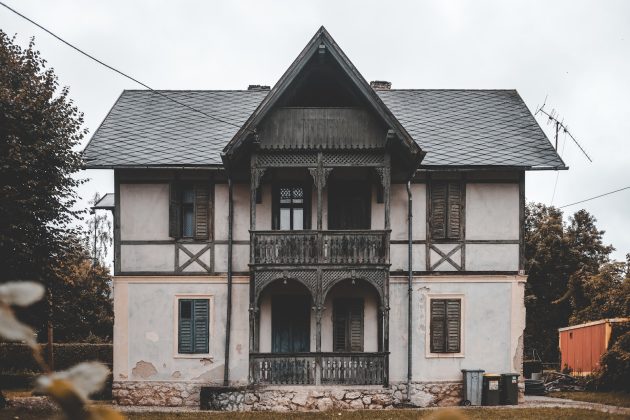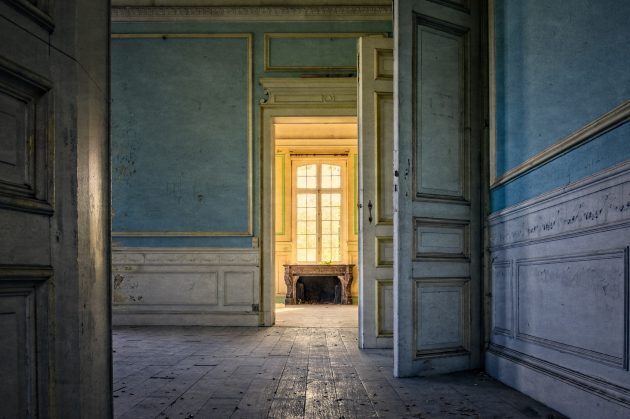No one wants to wake up in the middle of the night to find their house falling around them. Unfortunately, this is a reality that many homeowners have faced due to damaged foundations or other structural issues. That’s why it’s essential for all homeowners to know how to prevent a damaged house from falling down before disaster strikes.
So, here are six of the most common causes of foundation damage and what you can do as a homeowner to protect your home from these threats, and the best tips on how to inspect your home regularly for signs of damage and what steps you should take if you suspect there may be an issue with your foundation or structure. Read on!

Start From The Bottom
The foundation of your home is the single most important structural element, and it’s what keeps your home standing. That’s why it’s essential to make sure that the foundation is sound and well-maintained. One of the most common causes of structural damage is water infiltration or seeping into the foundation, which can cause cracks to form over time. To prevent this from happening, you should waterproof your basement, exterior walls, and any other areas where water may be able to penetrate the structure. Make sure to also research examples of foundation repair in Detroit to see how other homeowners have been able to repair their structures and prevent further damage. Additionally, you should inspect your foundation for cracks, signs of water infiltration, and other damage regularly.
Roofing
Your roof is another key element of your home’s structural integrity, and it can easily become damaged if not maintained properly. Make sure that you get it inspected regularly by a professional, as they will be able to spot any weakened or missing shingles. Additionally, check the gutters regularly to make sure they are clear of debris and properly draining away from the building. If your roof is older than 10 years, consider having it replaced completely with a more durable material such as metal or tile.
Of course, you should also make sure to clear any snow or ice off of your roof during winter months, as the weight of these elements can cause serious damage if they accumulate.
Soil and Landscaping
The soil around your home is another key element to keep an eye on. Make sure that there are no trees or large shrubs growing too close to the house, as their roots can cause damage to your foundation and walls over time. Additionally, check that there is no landscape erosion or water pooling near your home – if there is, you should take steps to fix the issue right away. If you’re in an area with clay soil, make sure to have it tested regularly for any signs of expanding or contracting, as this can cause serious structural issues if left unchecked.
The Power Of Reinforced Concrete
Reinforced concrete is an incredibly strong material that can help you protect your home from structural damage. Consider having reinforced concrete poured around the foundation or walls of your home, as this will create a barrier between them and any external elements such as water or soil erosion. Additionally, consider installing steel beams in the basement and crawlspace to give them extra strength and stability. Some structural damages, such as settling, can be prevented with the installation of a reinforcing system as well. Some of the benefits of reinforced concrete include:
- Increased durability – Reinforced concrete is stronger than regular concrete due to the addition of steel bars, which are added during the mixing process. This makes it more resistant to cracking and other types of damage that can occur due to weathering, movement, or settlement.
- Greater resistance to fire – Reinforced concrete is much more fire-resistant than regular concrete. It has a higher melting point and can better withstand heat, making it an ideal material for use in fire-prone areas.
- More efficient construction – When reinforced concrete is used, the construction process is faster and more efficient as there is no need to install additional forms or supports. This means that the overall cost of construction is often lower when reinforced concrete is used.
Reinforcing With Columns
Another way to reinforce the structure of your home is to install columns. Columns can be installed either outside or inside the home, and they help to provide additional support to walls and other structural elements. This can help prevent wall damage caused by settling soil or water infiltration. Additionally, you can use columns as aesthetically pleasing architectural features that will make your home look even more beautiful.
Beams are also an option, but they are usually more expensive than columns. Depending on the type of column being used and its intended purpose, installation can range from simply anchoring them to the wall to attaching them with bolts or screws. If you’re looking for a more permanent solution, concrete piers may be a better option.
Inspections Are Key
Finally, regular inspections are essential for keeping your home safe from structural damage. Have a professional come out every few years and give your home a thorough inspection – this will allow them to spot any potential issues and help you take steps to fix them before they become serious problems. Doing so will save you time, money, and a lot of hassle in the long run.
Taking care of your home’s structural elements can seem intimidating, but it doesn’t have to be a difficult task. With a little bit of research and planning, you can ensure that your home is safe from any potential damages and maintain its beauty for years to come.
Structural damage to your home is one of the worst things that can happen, and it’s important to be aware of potential risks so you can take steps to prevent them. Water infiltration, roofing issues, soil erosion, and even simple wear and tear can all contribute to structural damage if they aren’t addressed in time. Make sure to inspect your home regularly for any signs of damage or weakening structures, and consult with a professional if needed.
Additionally, consider installing reinforcements such as reinforced concrete or steel beams for extra protection. With these tips in mind, you can help ensure that your home remains safe and secure for years to come!















